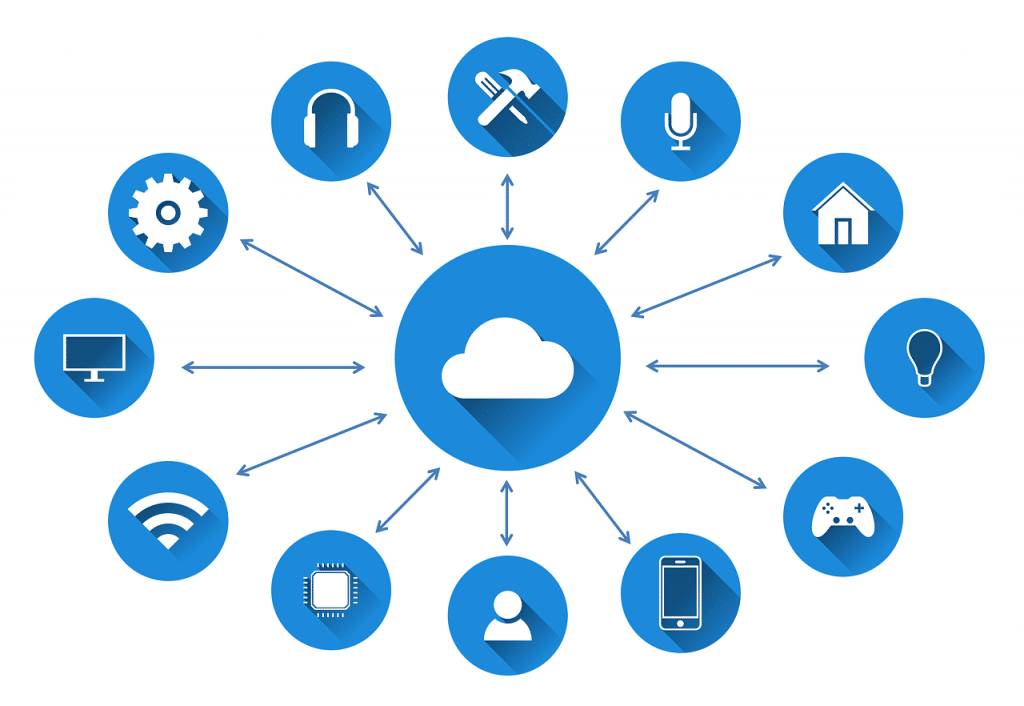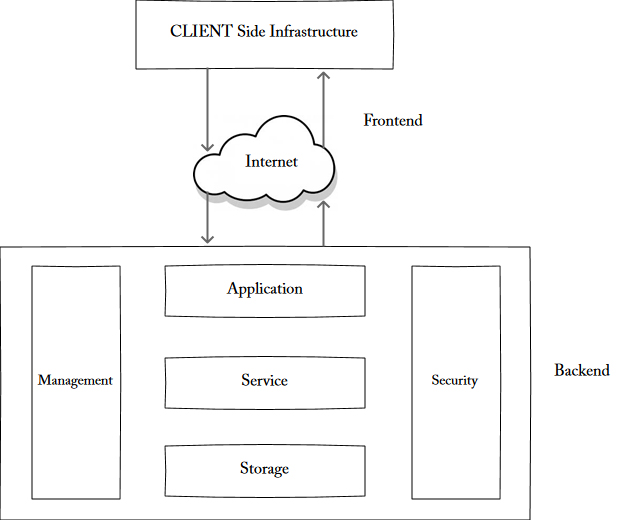WHAT IS A CLOUD COMPUTING?

Cloud computing is on-demand access to computing resources—applications, servers (physical and virtual), data storage, development tools, networking capabilities, and more—hosted at a remote data center controlled by a cloud services provider and accessible via the internet (or CSP). The CSP charges a copayment for these resources or bills their usage patterns.
When compared to standard on-premises IT, cloud computing can assist you with the following steps, depending on the cloud services you choose:
- Reduced IT expenditures
Cloud computing allows you to offload part or all of the costs and work associated with purchasing, installing, configuring, and administering your own on-premises equipment. - Improve time-to-value and agility
Instead of waiting weeks or months for IT to reply to a request, purchase, and set up supporting hardware, and install software, your company can begin using corporate apps in minutes using the cloud. You can indeed give some people, like developers and data scientists, access to software and support infrastructure via the cloud.
- Scale more easily and cost-effectively
- Adds up elasticity, allows you to scale capacity up and down in response to traffic spikes and dips rather than acquiring excess capacity that sits unused during leave requests. You can also use the massive network of your cloud provider to deliver your applications closer to users across the globe.
Cloud computing also refers to the technology that allows the cloud to function. This can comprise virtualized IT held by the firm, operating system software, networking, and other abstracted infrastructure, It is pooled and divided using special software, regardless of social hardware boundaries. A single hardware server, for example, can be partitioned into numerous virtual servers.
Virtualization allows cloud providers to get the most out of their data centers. Many companies, predictably, have adopted the cloud delivery model for their on-premises infrastructure in order to maximize utilization and cost savings over traditional IT infrastructure while still providing the same self-service and agility to their end-users.
CLOUD COMPUTING ARCHITECTURE

The cloud computing architecture is based on a number of loosely linked cloud architectures.
They can be divided into two parts:
Front-end development
In the backend, each end is connected to the other via a network, most commonly the Internet. The diagram underneath depicts a graphical representation of cloud computing architecture:
Front End
The client-side of a cloud computing system is known as the front end. It is formed of the interfaces and software needed to access cloud computing platforms, such as a search engine.
Backend
The cloud is called the back end. It includes all of the resources necessary to provide cloud computing services. It involves large amounts of data storage, virtual machines, security mechanisms, services, deployment techniques, and servers, among other things.
Note: The back end is responsible for ensuring built-in security mechanisms, traffic control, and protocols. The server uses middleware, which is a protocol that allows connected devices to communicate with one another.
CLOUD COMPUTING APPLICATIONS
Trade, entertainment, data storage, social networking, management, entertainment, education, art, and GPS are just a few of the industries that use cloud computing.
Some of the most well-known cloud computing applications are used by this internal group:
Business Applications
By merging tools like MailChimp, Chatter, Google Apps for Business, and QuickBooks, cloud computing has made organizations more collaborative and simple.
| S. No. | Application Description |
| 1. | MailChimp It provides a framework for sending and receiving emails. Businesses use it to create and send their e-mail campaigns in large numbers. |
| 2. | Chatter Employees can use the Chatter app to share essential information about the company in real-time. Anyone can access real-time information on any topic. |
| 3. | Google Apps for Business Google Docs allows business users to create text documents, spreadsheets, presentations, and other documents, which they can then share and collaborate on. |
| 4. | QuickBooks It provides a firm with online accounting solutions. It aids in the management of cash flow, the preparation of VAT returns, and the creation of company reports. |
Data Storage and Backup
Cloud data storage and backup services are provided by Box.com, Mozy, and Joukuu.
| S. No. | Application Description |
| 1. | Box.com Files can be dragged and dropped on Box.com. Users must drag and drop files into Box and access them from anywhere. |
| 2. | Mozy To avoid data loss, Mozy provides free backup service for files. |
| 3. | Joukuu Joukuu is a user interface that is accessible via the internet. It allows you to see a single list of contents for Google Docs, Box.net, and Dropbox files. |
Management Applications
Apps for management activities such as time monitoring and note organization are available. The following are some examples of applications that accomplish similar tasks:
| S. No. | Application Description |
| 1. | Toggl It aids in the tracking of time periods assigned to specific projects. |
| 2. | Evernote It manages sticky notes and it can read text from photos, allowing the user to quickly identify the notes. |
| 3. | Outright It’s a bookkeeping program. It allows you to keep track of your earnings, expenses, profits, and losses in real-time. |
Social Applications
Websites such as Facebook, Twitter, and others provide social networking services.
| S. No. | Application Description |
| 1. | It provides a service for social networking. Photos, movies, files, status updates, and much more can be shared. |
| 2. | It facilitates direct interaction with the general audience. Anyone can follow any celebrity, organization, or individual on Twitter and receive the most up-to-date information about them. |
Entertainment Applications
| S. No. | Application Description |
| 1. | Audio box.fm It already has a streaming option. The music files are hosted online and can be accessed with the service’s own media player. |
Art Applications
| S. No. | Application Description |
| 1. | Moo It provides art services such as business card design and printing, as well as postcards and micro-cards. |
ADVANTAGES OF CLOUD COMPUTING
Cost Savings
The ability to save money is one of the most appealing aspects of cloud computing. Because it doesn’t require any actual hardware, it allows you to save a lot of money. Consequently, the maintenance of the hardware does not demand the usage of trained personnel. The cloud service provider is responsible for procuring and managing equipment.
Strategic edge
Cloud computing gives you a leg up on your competitors. One of the biggest features of Cloud services is that you may access the most up-to-date programs at any time without having to spend time or money on installation.
High Speed
With cloud computing, you can deploy your service in a matter of seconds even with fewer clicks. You may receive the resources you require for your system in less time as a result of this faster deployment.
Back-up and Restore data
Once data is saved on the cloud, backing it up and restoring it, which is a time-consuming job on-premise, is much easier.
Reliability
One of the most significant benefits of cloud hosting is its reliability. You will always be kept up to date on any changes.
DISADVANTAGES OF CLOUD COMPUTING
Performance Can Vary
When you work in a cloud environment, your application can run on a server that also operates as a resource provider for other enterprises. Any self-centered behavior on the part of your tenant, or a DDOS attack, could impact the functioning of your shared resource.
Technical Issues
Outages and other technical issues are common in cloud computing. Even the best cloud service provider firms, despite maintaining excellent maintenance standards, may run into problems.
Security Threat in the Cloud
Another disadvantage of using cloud services is the security risk. If you use cloud computing, you should be aware that you will be sharing all of your sensitive company data with a third-party cloud computing service provider. Hackers could take full advantage of this knowledge.
Internet Connectivity
In cloud computing, reliable Internet access is essential. If you don’t have internet access, you can’t use the cloud. In addition, there are no alternative options for gathering data from the cloud.
Lower Bandwidth
Many cloud storage service providers restrict their users’ bandwidth use. As a result, if your winning sales the allotted budget, the additional costs could be enormous.
CONCLUSION:
Cloud computing is on-demand access to computing resources—applications, servers (physical and virtual), data storage, development tools, networking capabilities, and more. The cloud computing architecture is based on a number of loosely linked cloud architectures. Trade, entertainment, data storage, social networking, management, entertainment, education, art, and GPS are just a few of the industries that use cloud computing.
